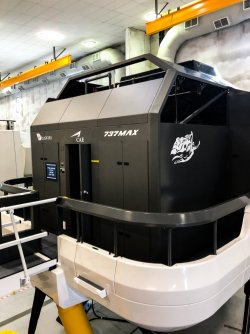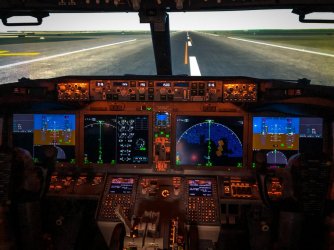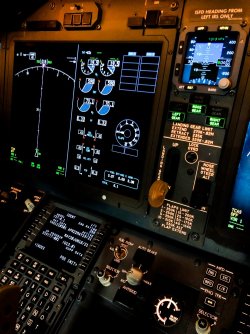6 months on and I’ve had to do a line check in the aeroplane which had expired followed by my standard cyclic check.
Looking back over the last 12 months in my logbook shows that I had only flown around 100hrs in the last 15 months. Compared to the previous year. When I was doing around 850 in 12 months.
The sim had training on day 1 (approved by CASA) instead of the check because of the inconsistencies of hours over the last little bit.
Day 1
This had a multitude of just box ticking exercises aimed at cold weather operations. The line orientated exercise (done as a crew) started off on a 1°c morning in Canberra, (flight planned to MEL) with Freezing Fog. Plenty of discussion and the need for “de icing” and we were pushing back from the gate with an engine problem on the push. A quick run of the checklist and a normal start was now completed.
Taxiing out was in 350m visibility (the minimum for CBR). With the captain as pilot flying, once we got airborne and a positive rate was achieved, I pulled the gear lever up but we got both 3 red lights and 3 green lights at the same time. With performance not an issue we continued climbing to a safe altitude where we could pull out the gear disagree checklist. This was identified by the gear remaining down despite the lever being in the UP position.
A quick calculation from the paper Quick Reference Handbook (with some interpolation required) showed we would run out of fuel if we continued to Melbourne. Canberra was out of the question (weather was below minimas), so we declared to go to Sydney. We continued climbing to the highest we could at the weight we were at. On the way a headwind meant that we were now burning more fuel. The wind at Sydney was 140° at 15kts and the duty runway was 16R. We determined if we stayed on the STAR with extra track miles on 16R we would be landing below our fixed reserve (and an appropriate MAYDAY call would need to be made), so we elected for a straight in approach to runway 07 instead and landed just above reserves.
End of exercise.
Next up was a max crosswind take off and landing each (34kts Takeoff and 40kts Landing)
A 125m visibility take off with a rejected take off.
A circling approach into Kalgoorlie for me with a DME arrival to the minima.
A hand flown raw data ILS each with an engine failure on final.
Finally a couple of upset recoveries each.
Day 2
Overall much quicker. The captain’s exercise was an APU fire just above transition with a diversion to Canberra for an GPS (RNP) approach to runway 17.
Mine was a standard engine failure at V1 on 16R with a straight return to land and a single engine missed approach. Once the missed approach was completed I got repositioned back to complete the single engine landing.
After those 2 exercises and a quick break we got repositioned to Canberra for a terrain escape manoeuvre each.
Finally, about 3 low visibility approaches (autoland) in MEL. The first one there was no failure. The second one was Category 3A with the loss of the autothrottle (which meant a reversion to Category 2 but conditions were below that) so a missed approach was conducted. Which might I add that in an autoland set up both autopilots are engaged. Because of this, if a missed approach is to be made then they still remain engaged, and it doesn’t kick out like on a normal single channel approach.
Finally the last one had the standby instrument fail which was just a continue to autoland.
Check Complete.
Now that the check was done in around 2.5hrs we still had a bit of time, and seeing as we would be getting familiar with the MAX sim over the next 6 months, we decided to fire it up and go a burn with a circuit each around Brisbane.
The simulator itself is very impressive and comes with the new car smell. The sounds and visuals are amazing. The main instrument panel is a complete replica of the 787, while the overhead panel is exactly the same (sigh) and the centre console is the same as the latest NG versions that come with ACARS and GLS capabilities (it’s like an ILS but with no ground based aids).
The aircraft “performed” quite well and was very responsive. While it was set up for MAX8 (Ansett Aviation have not yet reconfigured it for our model MAX10) it was definitely a lot more “pitchy” than the NG.
There are a lot more differences than I first thought and couldn’t believe Boeing would let pilots fly it with just a PowerPoint presentation. We will be having at
least 3 simulator sessions and a couple more upset recovery sessions in to to fully familiarise ourselves with the aircraft. In addition to that my understanding is everyone will need to do at least one cyclic check in the sim to be “checked out” on the aircraft. Not to mention the online learning that will need to be done beforehand.
While all the gear is impressive, this really needs to be the last “update”. It has gotten out of hand with modern technology mixed in with 1960s technology and the need for a paper Quick Reference Handbook checklist.
Lets see how it actually flies when they get here.
View attachment 248608View attachment 248609View attachment 248610

















